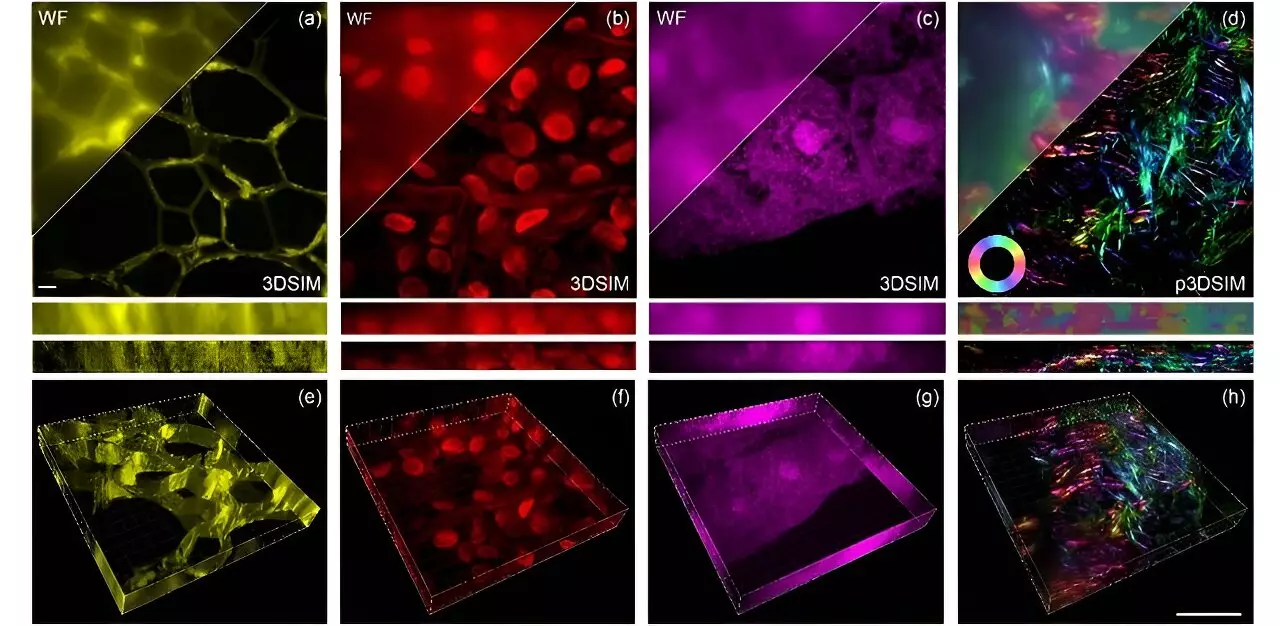In the ever-evolving field of microscopy, scientists have been continuously striving to push the boundaries of our understanding of the microscopic world. Recent years have witnessed remarkable strides in both hardware and algorithms, allowing us to explore the infinitesimal wonders of life with unprecedented clarity. However, the development of three-dimensional structured illumination microscopy (3DSIM) has been hindered by challenges related to speed and polarization modulation intricacies.
A team led by Professor Peng Xi at Peking University has introduced a groundbreaking solution to these challenges with the development of the high-speed modulation 3DSIM system known as “DMD-3DSIM”. This innovative setup incorporates a digital micromirror device (DMD) and an electro-optic modulator (EOM), enabling scientists to visualize cellular structures in unprecedented detail. By significantly enhancing both lateral and axial resolution, DMD-3DSIM achieves a 3D spatial resolution twice that of traditional wide-field imaging techniques.
The DMD-3DSIM system allows researchers to capture intricate details of subcellular structures with remarkable precision. It has been successfully utilized to study various fundamental cellular components, such as the nuclear pore complex, microtubules, actin filaments, and mitochondria in animal cells. Furthermore, the system’s capabilities were extended to investigate highly scattering plant cell ultrastructures, including cell walls in oleander leaves and hollow structures in black algal leaves. Even within a mouse kidney slice, DMD-3DSIM unveiled a pronounced polarization effect in actin filaments. These discoveries contribute to our overall understanding of the complex mechanisms and structures within living organisms.
One of the most remarkable aspects of the DMD-3DSIM system is the commitment of Professor Peng Xi’s team to open science. They have made all the hardware components and control mechanisms of the system openly available on GitHub, providing an opportunity for collaboration and encouraging scientists from around the world to build upon this technology.
The DMD-3DSIM technique not only facilitates groundbreaking biological discoveries but also lays the foundation for the next generation of 3DSIM. By combining the principles of hardware and software openness, the researchers hope to pave the way for the future of multidimensional imaging. This collaborative and inclusive approach is set to accelerate advancements in microscopy and enable scientists to delve deeper into the complex world of life at the microscopic level.
The development of the high-speed modulation 3DSIM system, DMD-3DSIM, represents a significant breakthrough in the field of microscopy. By merging digital display technology and super-resolution imaging, this innovative setup enables scientists to visualize cellular structures with unprecedented clarity. The open science approach adopted by Professor Peng Xi and his team further augments the potential impact of this technology by fostering collaboration and encouraging the scientific community to contribute to its further development. As we look to the future, the advancements in high-speed modulation 3DSIM hold great promise for unlocking the secrets of the microscopic world and opening up new avenues of scientific exploration.


Leave a Reply